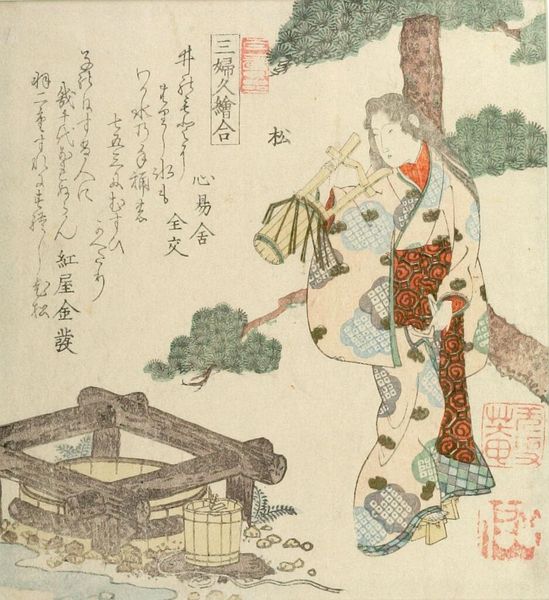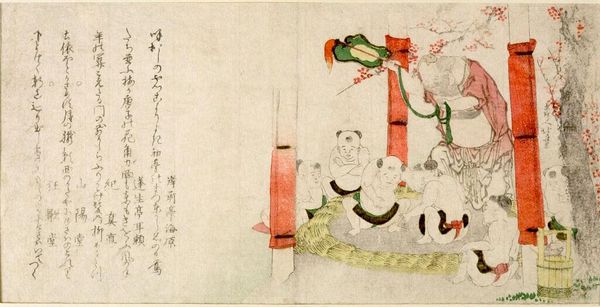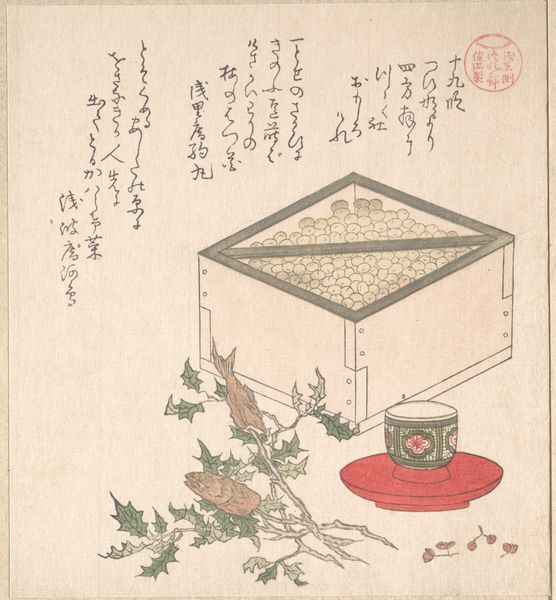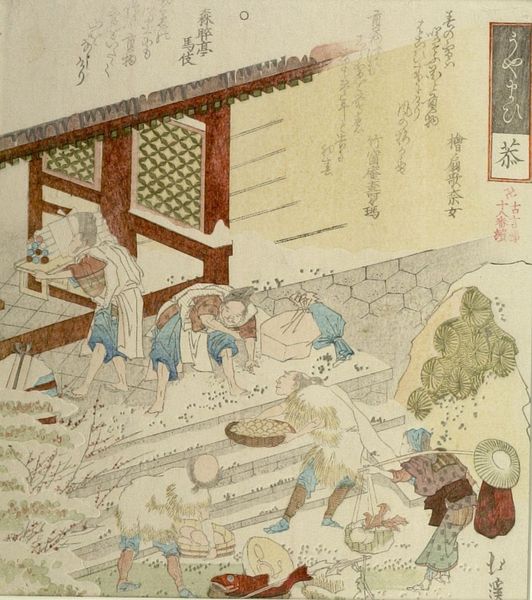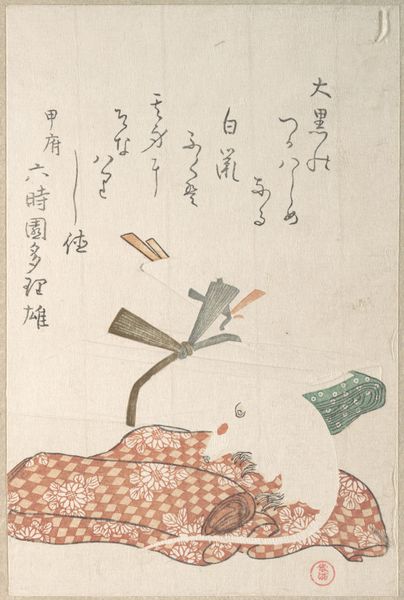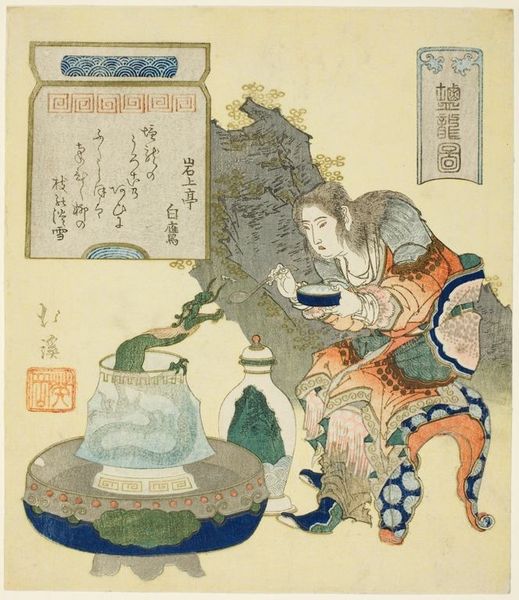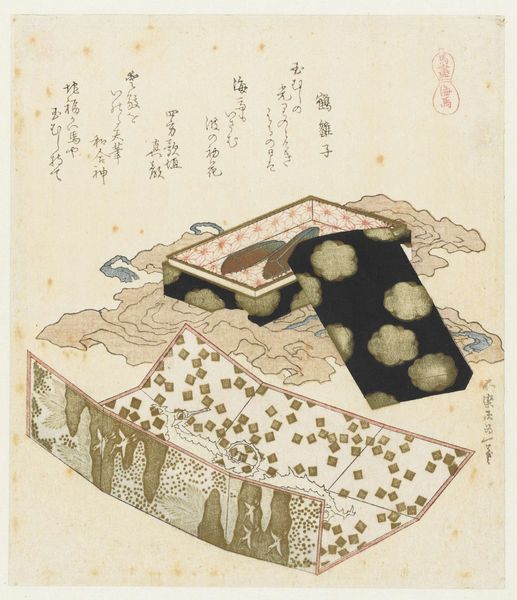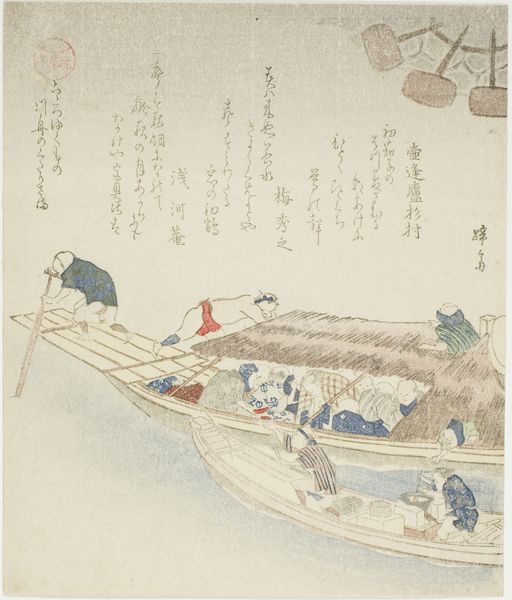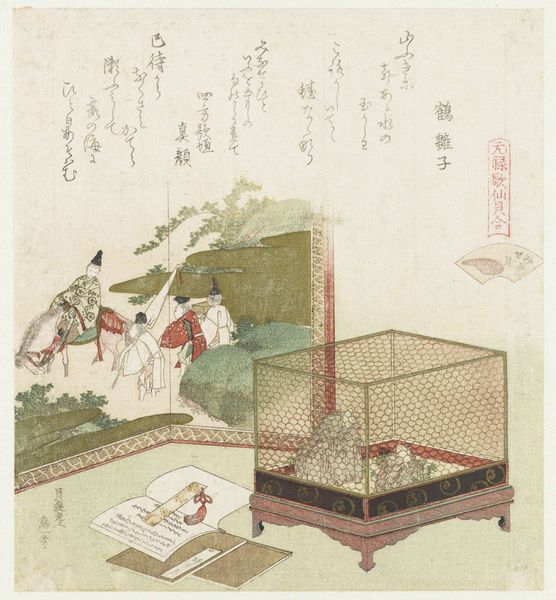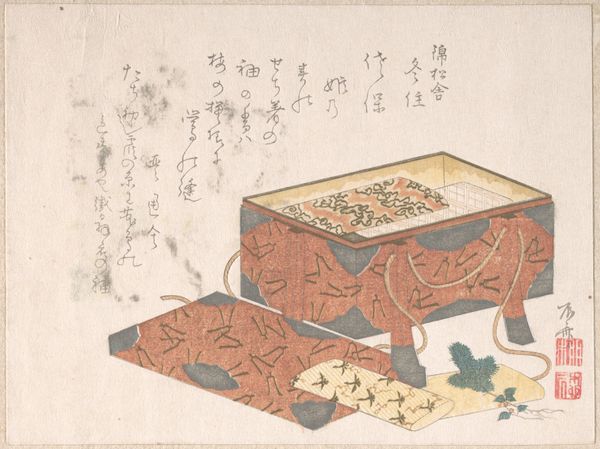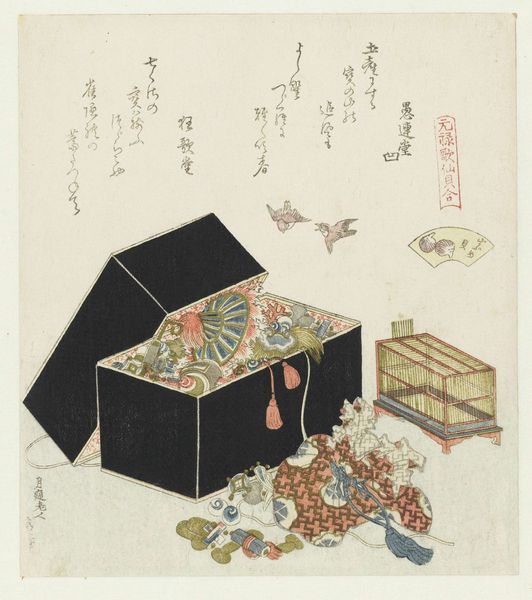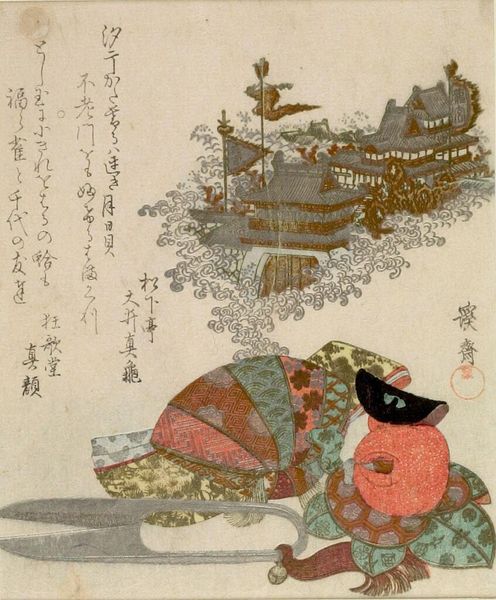
Shell-matching game, a calendar print (egoyomi) for 1814 1814
0:00
0:00
Dimensions: paper: H. 13.9 x W. 13.8 cm (5 1/2 x 5 7/16 in.)
Copyright: CC0 1.0
Curator: This is Kitagawa Tsukimaro's "Shell-matching game, a calendar print (egoyomi) for 1814," a woodblock print now held at the Harvard Art Museums. It's quite small, only about 14 by 14 centimeters. Editor: It’s striking how the patterned box dominates the composition. The craft of its construction is so apparent, from the joinery to the decorative textiles. Curator: These calendar prints, or egoyomi, were popular in the Edo period. They cleverly concealed the lunar calendar within the design, often as a puzzle or game. This one uses shell shapes. Editor: The shells themselves are subtly placed, almost an afterthought to the box and its ornate decoration. Do you think the artist is emphasizing the box as an item of status and wealth over the game? Curator: It's definitely pointing to the cultural significance of shell-matching as an aristocratic pastime, a means of displaying refinement and knowledge. The game served as a stage for social performance. Editor: Yes, and the details—the tassel, the patterned fabrics—speak volumes about the labor involved in creating such objects, and the value placed on refined artistry. Curator: Absolutely, the print underscores that art, even in a seemingly simple form, is deeply embedded in its cultural moment. Editor: Seeing the materiality celebrated in this way really highlights how art is always a product of tangible things, of making and doing.
Comments
No comments
Be the first to comment and join the conversation on the ultimate creative platform.
